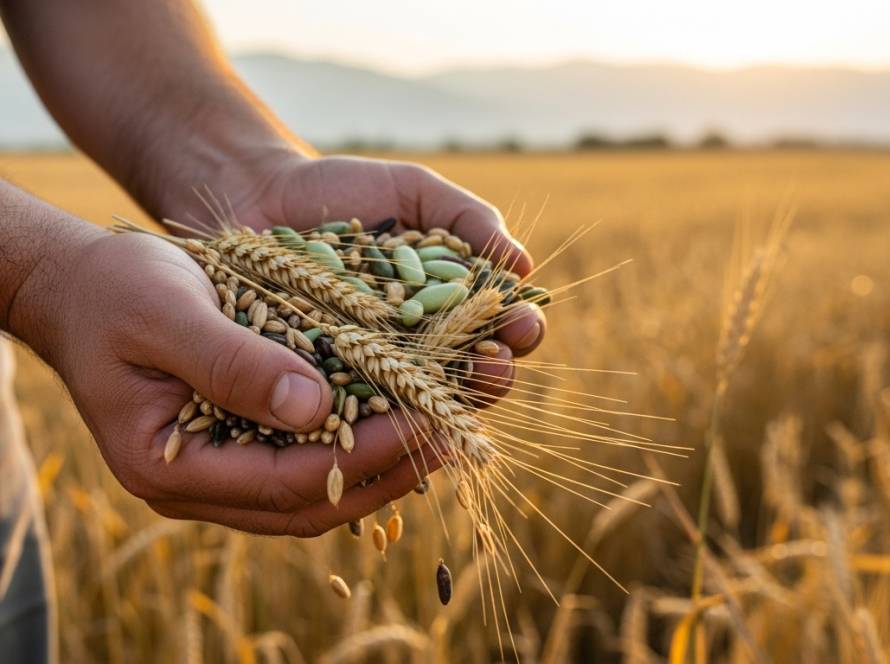One of the most critical steps in the agriculture sector is ensuring that farm-produced food reaches tables as quickly and efficiently as possible. This process forms the “farm-to-table” food supply chain. Starting from farms, passing through distribution channels, and eventually reaching supermarket shelves and consumers’ homes, this chain, when not optimized for efficiency, can lead to losses, increased costs, and food waste. In the journey from the production of agricultural products to their delivery to consumers, there are various ways to improve efficiency. In this article, we will explore key methods for increasing efficiency in the supply chain.
1. Digital Transformation and Smart Technologies
One of the most effective ways to increase efficiency in agriculture is by integrating digital transformation and smart technologies into the supply chain. Digitization allows all processes to be managed more transparently, quickly, and efficiently. It is possible to enhance efficiency throughout the production-to-distribution process, especially through the use of sensors, data analytics, and smart farming applications.
- Sensor Technologies: Sensors used on farms provide real-time data on plant growth, soil moisture levels, and climate conditions, helping manage production more efficiently. This data helps farmers determine the right times for irrigation, fertilization, and harvesting.
- Smart Farming Applications: Technologies such as artificial intelligence and machine learning optimize every stage of production in agriculture. For example, AI-powered software can predict the most efficient planting and harvesting times, enabling farmers to produce more with fewer resources.
- Blockchain Technology: Blockchain can be used to provide traceability and transparency in the food supply chain. This technology, which shows consumers where and how products are produced and the stages they go through, ensures secure and fast supply chain management.
2. Improvement in Logistics and Distribution Processes
Another way to increase efficiency in the supply chain is by optimizing logistics and distribution processes. Utilizing methods that save time and reduce costs in the process from harvesting food to delivering it to consumers can significantly improve overall efficiency.
- Cold Chain Logistics: Cold chain logistics play a critical role in preserving the quality of fresh food. The harvested products must be transported under the correct temperature conditions to stay fresh. Cold chain logistics prevent product spoilage, reduce waste, and improve customer satisfaction.
- Route Optimization: In logistics, optimizing routes reduces fuel costs and ensures products reach consumers faster. Especially with digital mapping technologies and GPS-based systems, logistics companies can carry out more efficient distribution.
- Storage and Inventory Management: Minimizing the risk of spoilage during storage and managing inventory efficiently increases supply chain efficiency. Automated inventory tracking systems and data-based analytics help predict when products will run out, reducing unnecessary stock costs.
3. Sustainable and Environmentally Friendly Practices
Today, environmental sustainability has become a key element in increasing efficiency in the supply chain. Environmentally conscious production and distribution methods not only reduce costs but also help businesses fulfill their environmental responsibilities. Sustainable solutions in the farm-to-table journey increase efficiency while contributing to a healthier environment in the long term.
- Reduced Resource Use: Sustainable farming practices aim to produce with less water, energy, and chemicals. Drip irrigation, energy-efficient machinery, and organic fertilizers are important components of sustainable agriculture. These methods reduce production costs while protecting the environment.
- Reducing Food Waste: Post-harvest food waste is one of the biggest issues that reduce supply chain efficiency. Using efficient harvesting techniques, cold storage, and better logistics can minimize food waste. Additionally, recycling or repurposing wasted food helps use resources more efficiently.
- Use of Renewable Energy: Using renewable energy starting from farms and in storage and logistics processes reduces energy costs and the carbon footprint. Renewable energy sources such as solar power and biogas offer solutions that increase energy efficiency in agricultural operations.
4. Education and Workforce Efficiency
For the supply chain to operate efficiently, the workforce must be trained and competent. Ensuring that everyone involved in the process, from farm workers to logistics operators, is properly educated plays a crucial role in increasing efficiency.
- Training for Farmers: Educating agricultural producers on modern farming techniques, digital tools, and sustainability improves efficiency in production processes. Farmers who are familiar with the latest technologies and best practices in agriculture can produce more with fewer resources.
- Training for Logistics Workers: Knowledgeable logistics operators and distribution workers can prevent disruptions in the supply chain by being informed about route optimization, product storage, and cold chain processes. A trained workforce increases efficiency at every stage.
- Use of Digital Tools: Digital tools and software used at every stage of the supply chain can enhance workforce efficiency. Trained personnel can use these technologies effectively to optimize production and distribution processes.
5. Cooperatives and Collaboration with Stakeholders
Effectively managing the supply chain requires cooperation between various stakeholders, from farms to logistics companies, retailers, and consumers. Cooperatives and collaborative platforms allow small-scale farmers to integrate into larger supply chains and produce efficiently.
- Cooperative Solutions: Agricultural cooperatives help small producers reach broader markets and increase efficiency by sharing logistics costs. Through cooperatives, farmers gain stronger bargaining power and can sell their products at better prices.
- Transparency Among Stakeholders: Transparency in the supply chain ensures that every stage is traceable and efficient. Transparent collaboration between producers, logistics companies, and retailers increases efficiency at every link in the chain. Technologies like blockchain make the process more transparent by tracking where and how products are produced.
Increasing efficiency in the supply chain is vital for the growth and sustainability of the agriculture sector. Methods such as digital transformation, optimizing logistics processes, sustainable practices, a trained workforce, and collaboration with stakeholders maximize efficiency from the farm to the table. Managing agricultural production in a way that provides more yield with fewer resources is an important step toward ensuring future food security.





